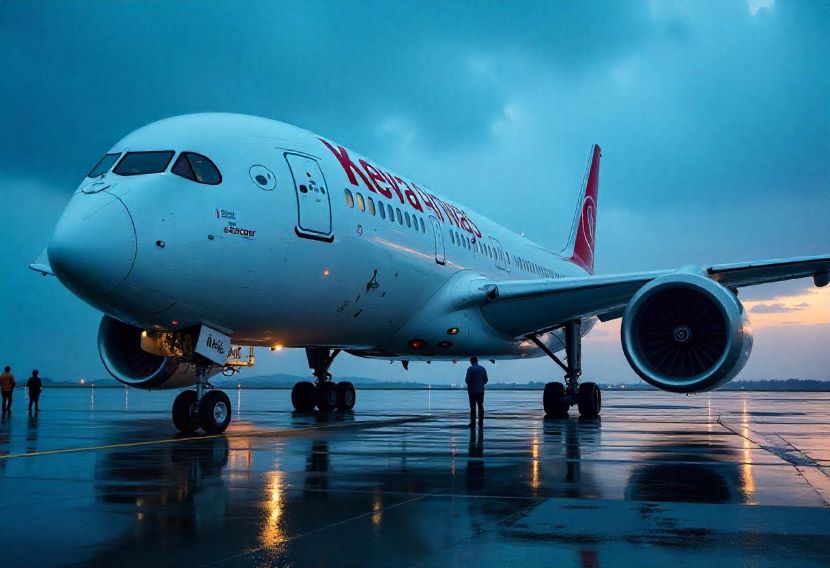Transforming Aviation for Enhanced Connectivity
Kenya’s aviation landscape is poised for significant transformation, essential for bolstering tourism. While high airfares pose a challenge, innovative strategies are being developed to improve affordability and connectivity, making travel within the region more appealing for visitors.
Resilient Tourism in Kenya
The tourism sector in Kenya continues to show remarkable resilience despite global economic pressures affecting airlines. In 2023, tourism contributed a staggering KES 1 trillion to the national economy, accounting for 7.5% of GDP and supporting approximately 1.55 million jobs. With international tourist arrivals surpassing two million, the industry is on track to surpass 2.39 million arrivals in 2024. This upward trend underscores the critical need to address air travel affordability to maximize the potential of tourism.
Overcoming Travel Barriers
International travelers often face hurdles such as complicated visa processes and limited intra-African connections. The lack of direct flights between African cities often leads to inconvenient and expensive layovers, typically through Nairobi. This connectivity gap adversely impacts prime destinations like Mombasa, a beautiful beach location currently underserved by direct international flights. Expanding direct routes to coastal airports could significantly benefit regional economies and enhance the traveler’s experience.
Strategic Goals for Tourism Expansion
Kenya aims to attract five million tourists annually, which requires a multi-pronged strategy focused on improving overall visitor experiences. Enhanced connectivity, streamlined visa procedures, and affordable domestic flights are vital to realizing this ambition. Implementing people-centric aviation policies, including reducing taxes and airport fees, is essential for achieving this goal.
Kenya Airways: A New Chapter
Key player Kenya Airways recently reported its first profit in over a decade, reaching KES 5.4 billion after tax for the financial year 2024. This turnaround is primarily attributed to Project Kifaru, a multi-phase plan designed for financial sustainability, customer-focused operations, and environmental stewardship. With a revenue increase of 6%, totaling KES 188.5 billion, the airline is tapping into rising passenger numbers (5.23 million) and expanded capacity. Kenya Airways is actively seeking a strategic investor to ensure long-term viability, while also committing to fleet modernization and network expansion, which includes new routes to destinations like Mogadishu and Eldoret.
Addressing Airfare Challenges
High airfares remain a significant concern in East Africa, with ticket prices ranking among the highest globally, primarily due to limited competition and restrictive regulations. Kenya can take cues from low-cost carriers in other regions by implementing reduced taxes and strategies like route-sharing and improved fleet utilization.
The Role of Technology and Partnerships
Technology is crucial in the modernization of travel. Innovations such as online booking, mobile payments, and AI-driven customer service significantly enhance planning, accessibility, and overall customer satisfaction. Furthermore, public-private partnerships are instrumental in unlocking connectivity to underserved regions, thereby attracting investment and fostering inclusive economic growth.
Kenya’s Vision for a Thriving Tourism Future
Embracing a more open skies policy is a step in the right direction; however, this should be done progressively to protect local carriers while welcoming international competition. By prioritizing affordability, connectivity, service quality, and technological advancements, Kenya can reshape its travel landscape and unveil its vast tourism potential.
Looking Forward: On the Path to 2030
Kenya envisions making air travel accessible for all by 2030, connecting with the world while fostering economic opportunities. Achieving this vision necessitates bold leadership, strategic investments, and collaborative efforts from all stakeholders involved in tourism development.
Final Thoughts
This discussion highlights the promising prospects within Kenya’s aviation and tourism sectors. Even the best reviews online can’t match the allure of personal experience. On GetExperience.com, customers can secure their trips through verified providers at competitive prices, ensuring the most informed decisions without unnecessary expenses or disappointments. The platform’s transparency and convenience empower travelers to explore adventure activities, museum tours with live guides, and eco-friendly wildlife safaris, ensuring memorable experiences. Book your Trip at GetExperience.com.
In summary, Kenya’s aviation sector is undergoing significant changes, strategically poised to support tourism growth. The reduction of travel costs, enhancements in connectivity, and proactive policies contribute greatly towards a more robust tourism industry, unlocking unique travel experiences and opportunities for both travelers and local economies alike.

